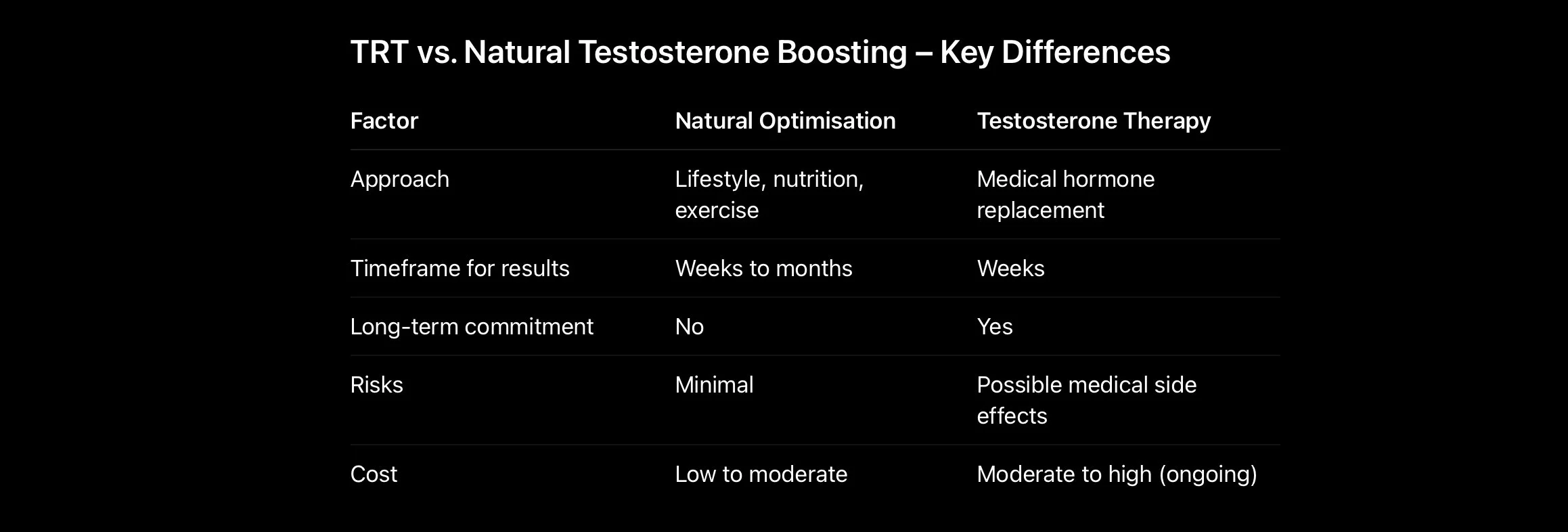Testosterone Therapy vs. Natural Optimisation: What Really Works for Strength, Recovery, and Longevity
Introduction
Testosterone is a cornerstone hormone for strength, recovery, bone health, mood, and vitality.
For many men and women over 40, declining testosterone can lead to slower recovery, reduced energy, stubborn fat gain, and lower motivation. This often prompts the question: Is testosterone therapy (TRT) the answer, or can you boost testosterone naturally through lifestyle changes?
In this article, we’ll explore natural testosterone optimisation strategies first, then examine the evidence, benefits, and risks of TRT—so you can make an informed choice for long-term health and performance.
Understanding Testosterone Decline After 40
Why Testosterone Levels Drop
Age-related decline: Testosterone typically decreases by 1–2% each year after age 30.
Lifestyle factors: Poor sleep, high stress, excess body fat, low activity, and poor diet can accelerate low testosterone symptoms.
Medical conditions: Metabolic syndrome, certain medications, and chronic illness may further reduce testosterone production.
Natural Ways to Increase Testosterone Without TRT
Before considering testosterone replacement therapy, it’s worth maximising these proven lifestyle interventions:
1. Strength Training for Hormone Health
Compound lifts like squats, deadlifts, bench press, and pull-ups can boost testosterone naturally, especially when performed with progressive overload.
Aim for 3–4 strength training sessions per week to support both hormone health and recovery.
2. Maintain a Healthy Body Fat Percentage
Excess visceral fat increases aromatase activity, converting testosterone into oestrogen.
Men: target 10–18% body fat.
Women: target 18–28% without over-restricting calories.
3. Prioritise Sleep for Hormone Recovery
Poor sleep can reduce testosterone by up to 15% in just one week.
Aim for 7–9 hours of quality, uninterrupted sleep.
4. Eat for Testosterone Support
Adequate protein: 1.6–2.2g/kg body weight.
Healthy fats: eggs, oily fish, avocados, nuts.
Key micronutrients: zinc, magnesium, vitamin D.
5. Reduce Chronic Stress
High cortisol levels can suppress testosterone production.
Incorporate daily stress management like breathwork, walking, or meditation.
When Natural Testosterone Optimisation Isn’t Enough
Even with perfect sleep, training, nutrition, and stress control, some people still have clinically low testosterone—often due to genetics, medical history, or significant age-related decline.
In these cases, testosterone replacement therapy may be an option.
What Is Testosterone Replacement Therapy (TRT)?
TRT involves a medically prescribed dose of testosterone—via injection, gel, or patches—to restore hormone levels to the optimal range.
Potential TRT Benefits
(Evidence-Based)
Increases lean muscle mass and strength.
Improves training recovery.
Enhances mood, focus, and energy.
Supports sexual health and libido.
Improves bone density, lowering osteoporosis risk.
TRT Risks and Side Effects
Requires ongoing medical supervision.
Potential for elevated red blood cell count (polycythaemia).
May reduce fertility by lowering natural testosterone production.
Possible cardiovascular risks (research is mixed).
Once started, stopping TRT after long-term use may result in very low testosterone temporarily.
Who Should Consider Testosterone Therapy?
Those with clinically low testosterone confirmed by blood tests.
Persistent low energy, poor recovery, or low libido despite natural optimisation.
Under care of a hormone specialist—not a one-size-fits-all online clinic.
Poseidon Performance Approach to Hormone Health
At Poseidon Performance, we focus on natural testosterone optimisation first—through evidence-based training, recovery strategies, and lifestyle changes.
For clients already on TRT, we design strength and conditioning programmes that enhance results while supporting joint health, bone density, and long-term performance.
FAQs About Testosterone Therapy and Natural Optimisation
What are the risks of testosterone therapy?
TRT can raise red blood cell counts, reduce fertility, and carry potential cardiovascular risks. Always work with a qualified medical professional and monitor blood markers regularly.
Can women take testosterone therapy?
Yes—women with clinically low testosterone may benefit from carefully prescribed doses, but this requires specialist oversight to avoid side effects.
What’s the safest way to increase testosterone naturally?
Strength training, quality sleep, healthy body fat levels, balanced nutrition, and stress management are the safest and most sustainable ways to optimise testosterone without TRT.
Does testosterone therapy build muscle faster?
Yes—TRT can improve muscle growth when combined with resistance training, but lifestyle habits remain crucial for long-term success.
Bottom Line
Start naturally: Many over-40s can boost testosterone without TRT through consistent training, good nutrition, and recovery habits.
TRT is not a shortcut: It’s a medical treatment with benefits and risks, best used when natural strategies are not enough.
Foundations matter: Whether optimising hormones naturally or through TRT, your training and lifestyle ultimately determine your long-term results.

